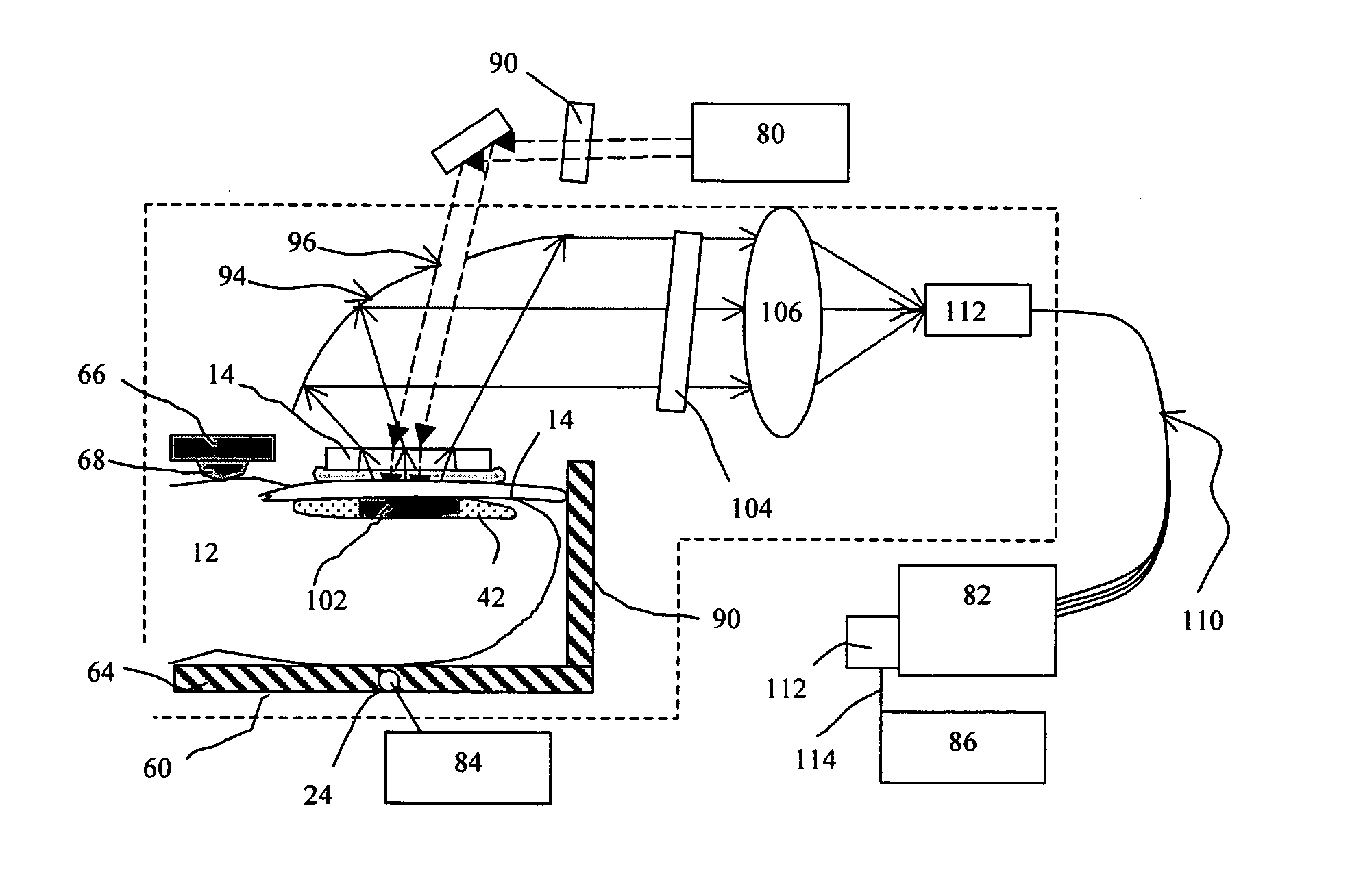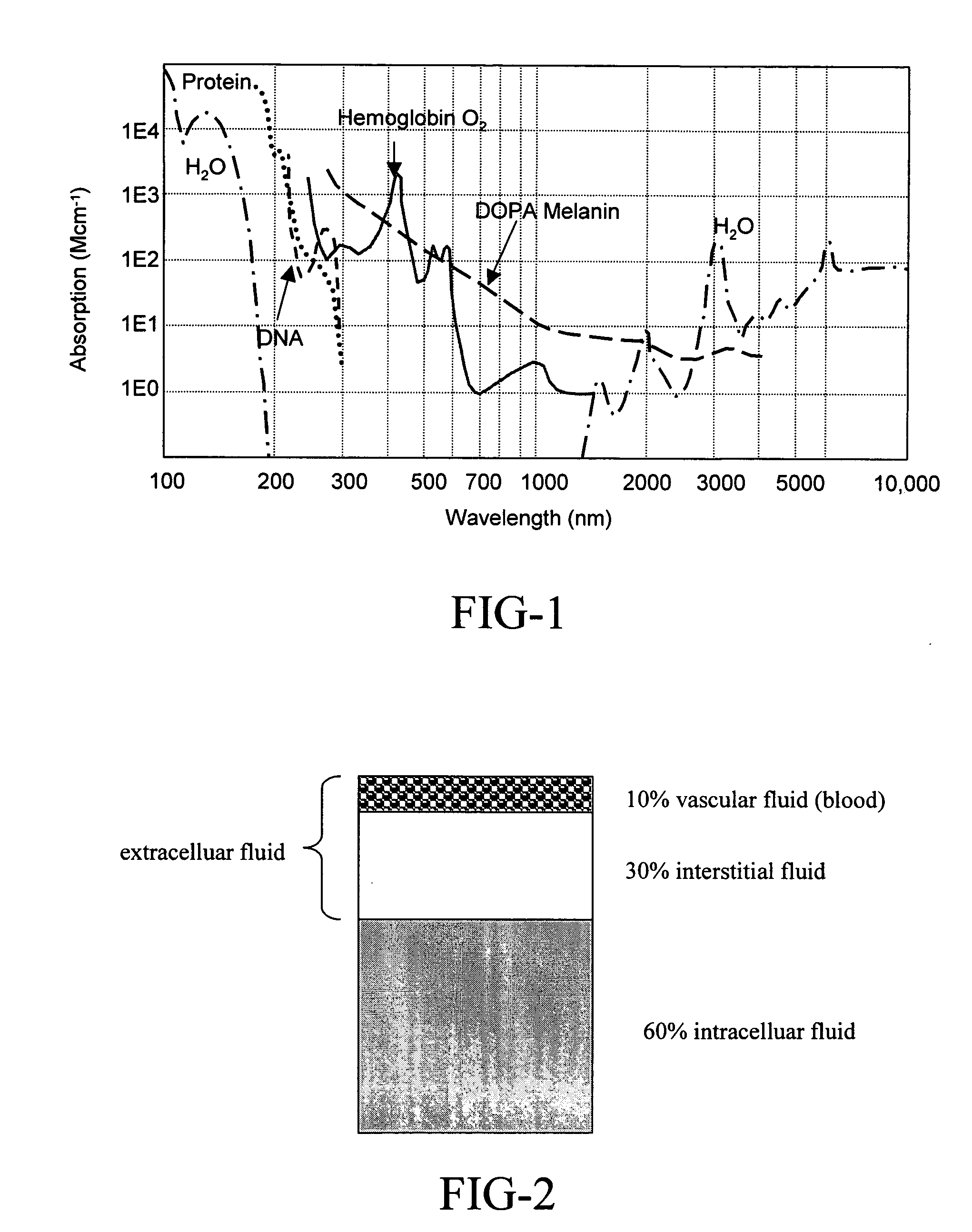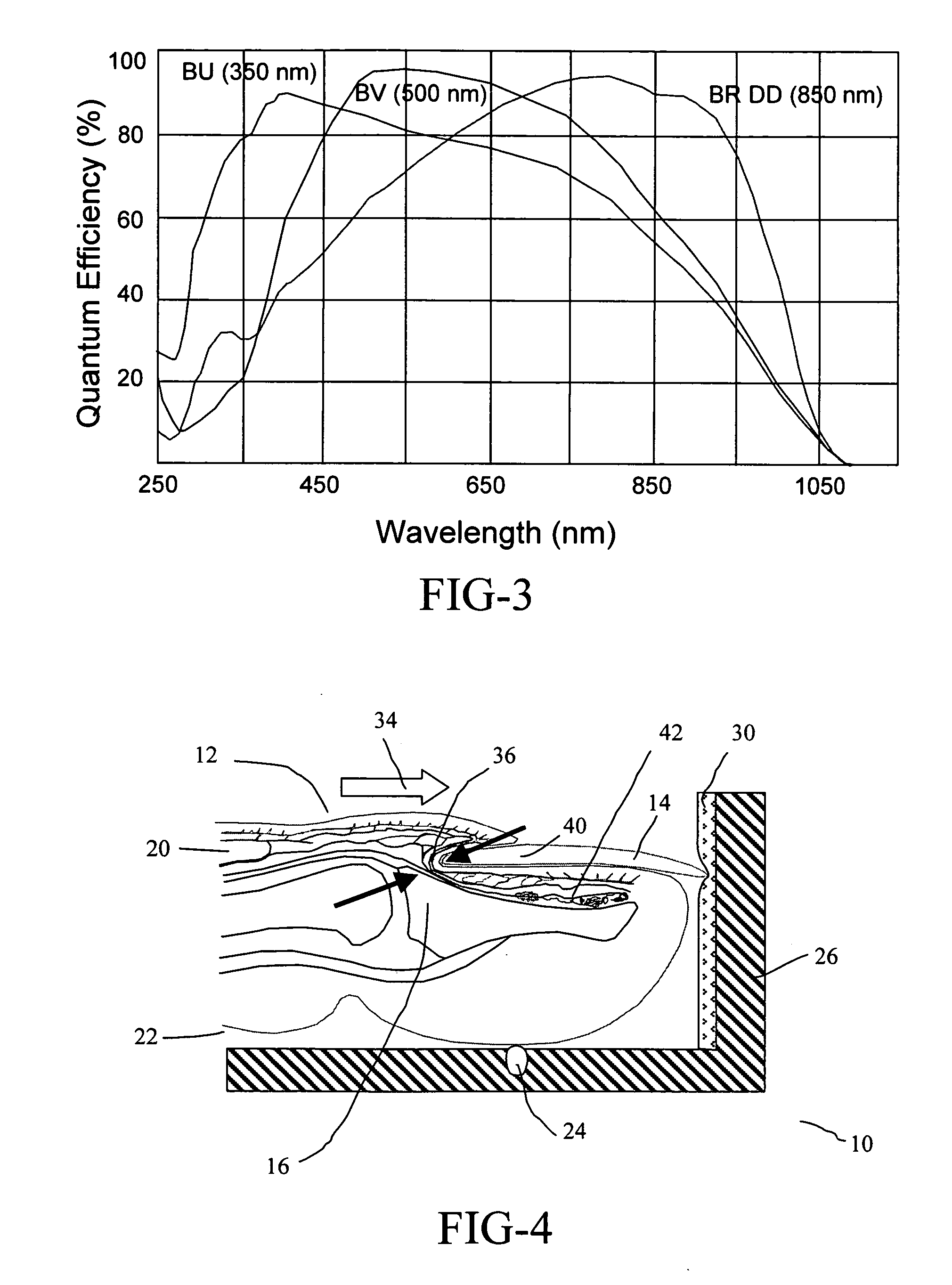Anti-stokes raman in vivo probe of analyte concentrations through the human nail
an in vivo probe and analyte technology, applied in the field of in vivo quantification of analytes, can solve the problems of weak signals resulting from such low concentrations being further distorted, the path length of laser light passing through the tissue is not suitable, and the optical analysis techniques available for whole blood are generally complicated
- Summary
- Abstract
- Description
- Claims
- Application Information
AI Technical Summary
Benefits of technology
Problems solved by technology
Method used
Image
Examples
Embodiment Construction
[0026] The present invention provides a system and method for analyzing Raman measurements of analytes in tissue by measuring and quantifying scattered Stokes and / or anti-Stokes photons.
[0027] In general, according to the present invention, Raman scattered light emitted at either longer or shorter wavelengths compared to the exciting incident light may be collected and sent to a spectrograph. A fingernail may be used as a transparent window to reach the tissue containing analytes below, and to collect Raman light scattered from the sampled tissue. Alternatively, a toenail or some other anatomical feature with very low absorption characteristics for the incident light wavelength may be used. In the following description, “nail” generally refers to either a fingernail or a toenail.
[0028] As noted above, incident light that interacts with body tissue typically produces a fluorescence signal in the tissue in addition to whatever absorption and / or scattering interactions may occur. Thi...
PUM
| Property | Measurement | Unit |
|---|---|---|
| incident wavelength | aaaaa | aaaaa |
| incident wavelength | aaaaa | aaaaa |
| incident wavelength | aaaaa | aaaaa |
Abstract
Description
Claims
Application Information
 Login to View More
Login to View More - R&D
- Intellectual Property
- Life Sciences
- Materials
- Tech Scout
- Unparalleled Data Quality
- Higher Quality Content
- 60% Fewer Hallucinations
Browse by: Latest US Patents, China's latest patents, Technical Efficacy Thesaurus, Application Domain, Technology Topic, Popular Technical Reports.
© 2025 PatSnap. All rights reserved.Legal|Privacy policy|Modern Slavery Act Transparency Statement|Sitemap|About US| Contact US: help@patsnap.com



